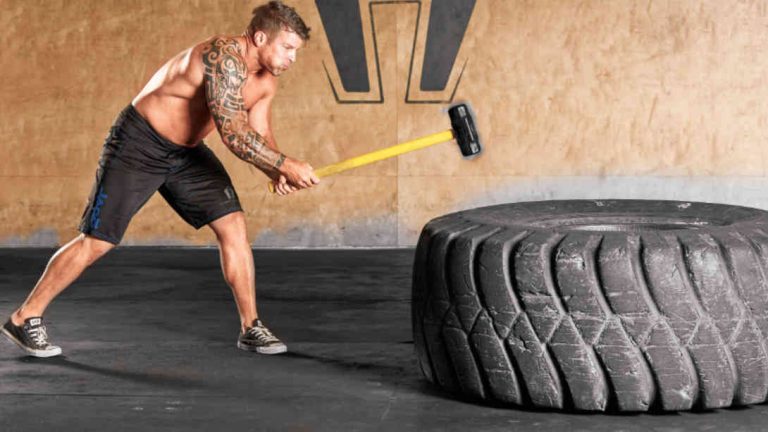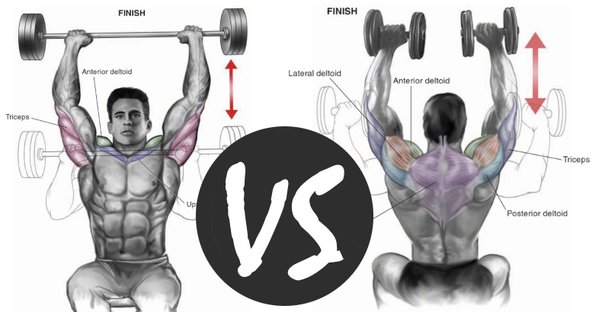The sledgehammer is one of the most versatile and powerful hand tools used in construction, demolition, and various heavy-duty tasks. Despite its simple design, the sledgehammer has a rich history and a range of applications that make it an indispensable tool in many industries.
Sledgehammers have traditionally been associated with heavy-duty tasks in construction and demolition. However, they have found a new role in the fitness industry as a tool for functional training. This article explores the different types of sledgehammers, how to choose the right one, their common uses in fitness, safety tips, and potential alternatives. This article will explore the ins and outs of sledgehammers, from their types and materials to their uses and safety tips.
What is a Sledgehammer?

A sledgehammer, is a versatile and powerful training tool used to enhance strength, endurance, and coordination. Typically consisting of a heavy, metal head attached to a long handle made of wood, fiberglass, or steel, sledgehammers vary in weight, usually ranging from 2 to 20 pounds or more. This tool is commonly used in functional training exercises, where its heavy weight and the dynamic swinging motion involved in exercises like tire slams engage multiple muscle groups, including the shoulders, arms, core, and legs.
The sledgehammer's design allows for high-intensity, full-body workouts that mimic real-world movements, making it a popular choice for high-intensity interval training (HIIT), boot camps, and strength conditioning routines. By incorporating sledgehammer exercises into fitness programs, athletes and fitness enthusiasts can improve their power, explosiveness, and overall physical conditioning. Additionally, the repetitive and forceful nature of sledgehammer workouts significantly boosts cardiovascular health and helps burn calories, contributing to overall fitness and weight management goals.
What Materials Are Used in Sledgehammers?
The materials used in constructing sledgehammers are critical to their performance and durability. The main components of a sledgehammer are the head and the handle.
Head Materials
- Steel: The most common material for sledgehammer heads, steel provides excellent strength and durability. The heads are often heat-treated to enhance their toughness and resistance to wear and impact.
- Brass or Copper: Used in soft-face sledgehammers, these materials are softer than steel and are used to avoid sparking and damaging delicate surfaces.
Handle Materials
- Wood: Traditional sledgehammer handles are made from hickory or ash. Wood handles provide a good grip and are relatively inexpensive but can break under extreme stress.
- Fiberglass: Fiberglass handles are more durable and resistant to weather and chemicals than wood handles. They also absorb shock better, reducing strain on the user's hands and arms.
- Steel: Steel handles are the most durable and can withstand the heaviest impacts. However, they are heavier and can transmit more vibration to the user, potentially causing fatigue.
What Are the Types of Sledgehammers?
Sledgehammers are used as versatile tools for various strength and conditioning exercises. Different types of sledgehammers cater to specific workout needs and preferences. The most common types include:
Standard Sledgehammers
These traditional sledgehammers feature a heavy metal head and a long handle made of wood, fiberglass, or steel. They come in a range of weights, typically from 2 pounds to 20 pounds or more. In fitness, standard sledgehammers are primarily used for high-intensity exercises like tire slams. The heavy head and long handle allow for powerful swings, engaging multiple muscle groups such as the shoulders, arms, core, and legs. These sledgehammers are ideal for building overall strength and power.
Mini Sledgehammers
Mini sledgehammers are smaller versions of the standard sledgehammer, usually weighing between 2 to 5 pounds. They have a shorter handle, which provides greater precision and control. In fitness routines, mini sledgehammers are used for exercises that require more accuracy and less brute force. These lighter sledgehammers are perfect for beginners or those focusing on improving endurance and coordination through repetitive, controlled movements.
Dead-Blow Sledgehammers
Dead-blow sledgehammers have a unique design featuring a hollow head filled with sand or shot that moves slightly on impact. This reduces rebound and increases the force delivered to the target. In fitness, dead-blow sledgehammers are ideal for exercises that require a powerful yet controlled blow. The reduced rebound minimises the risk of injury and enhances the effectiveness of strength training exercises, making them suitable for advanced workouts where precision and control are critical.
Soft-Face Sledgehammers
Soft-face sledgehammers come with replaceable faces made of softer materials like rubber, plastic, or copper. These hammers are used to strike surfaces that need protection from damage. In fitness, soft-face sledgehammers are employed in scenarios where the impact needs to be cushioned to prevent damage to the equipment or the striking surface. This type of sledgehammer is beneficial for indoor training environments where reducing noise and protecting surfaces is essential.
By understanding the different types of sledgehammers available, fitness enthusiasts can select the appropriate tool for their training goals, ensuring they maximize the effectiveness of their workouts while maintaining safety and control.
What Are the Types of Sledgehammers by Weight?
Sledgehammers are typically categorized into three weight ranges:
Light Sledgehammers (1-4 lbs)
Light sledgehammers are suitable for beginners and those focusing on endurance and high-repetition exercises. They help develop proper form and technique without overwhelming the user. They are often used for high-repetition exercises like sledgehammer swings, chops, and slams.
Medium Sledgehammers (5-10 lbs)
Medium sledgehammers strike a balance between weight and control, making them suitable for intermediate users. They provide enough resistance to build strength and power while still allowing for controlled movements. These weights are perfect for standard tire slams and full-body workouts. Medium sledgehammers are versatile and can be used for a wide range of exercises.
Heavy Sledgehammers (10+ lbs)
Heavy sledgehammers are best for advanced users who have developed the necessary strength and technique. They are ideal for intense strength training and power exercises, such as heavy tire slams. These weights significantly challenge the muscles, promoting muscle growth and enhancing cardiovascular endurance. They are typically reserved for advanced fitness enthusiasts or those targeting specific goals like muscle hypertrophy or grip strength.
How to Choose the Right Sledgehammer?
Selecting the appropriate sledgehammer for fitness training involves considering several key factors to ensure it meets your workout needs and goals:
Weight
The weight of the sledgehammer is crucial in determining the intensity of your workout. Heavier sledgehammers deliver more force, which is beneficial for building strength and power. However, they require more strength and control to handle effectively. Lighter sledgehammers are easier to manage and are suitable for tasks requiring precision and endurance. Beginners or those focusing on endurance training might start with a lighter hammer (2 to 5 pounds), while more advanced users aiming for muscle power might opt for heavier hammers (10 pounds or more).
Handle Length
The handle length affects leverage and control. Longer handles provide more leverage and allow for more powerful swings, making them ideal for exercises that involve large, sweeping movements like tire slams. However, they can be cumbersome in tight spaces or for those with less experience. Shorter handles offer better control and are ideal for close-quarters work or precision exercises. Fitness enthusiasts should choose a handle length that matches their workout space and the type of movements they plan to perform.
Handle Material
Sledgehammer handles come in various materials, each with its own set of advantages and disadvantages:
- Wood Handles: Offer a traditional feel and good grip but may not be as durable as other materials.
- Fiberglass Handles: Provide excellent shock absorption and durability, making them a popular choice for fitness.
- Steel Handles: Are extremely durable but can transmit more vibration to the user, which might be less comfortable during extended use.
Your choice of handle material should depend on your comfort, the type of exercises you plan to perform, and how much shock absorption you need.
Head Design
The design of the sledgehammer head also plays a significant role in its suitability for different fitness exercises:
- Steel Heads: Ideal for heavy-duty exercises like tire slams, where maximum impact force is desired.
- Soft-Face Heads: Better for exercises where the striking surface needs protection from damage, such as indoor workouts on gym flooring or padded targets. Soft-face sledgehammers reduce noise and prevent marring of surfaces, making them suitable for controlled environments.
By considering these factors—weight, handle length, handle material, and head design—you can select the right sledgehammer that aligns with your fitness goals and workout environment. This thoughtful selection will help you maximise the effectiveness of your training while ensuring safety and comfort.
What Are the Common Uses of Sledgehammers in Fitness?
Sledgehammers are incredibly versatile tools used in various fitness applications:
Tire Slams
The primary fitness exercise involving a sledgehammer is the tire slam, where participants swing the hammer to strike a large rubber tire. This exercise engages multiple muscle groups, including the shoulders, arms, core, and legs, providing a full-body workout.
Functional Training
Sledgehammers are used in functional training routines to improve strength, endurance, and coordination. Exercises mimic real-world movements, enhancing athletic performance and daily physical activities.
Cardio Workouts
Incorporating sledgehammer exercises into high-intensity interval training (HIIT) workouts boosts cardiovascular conditioning. The intense, repetitive motions elevate heart rate and burn calories effectively.
Strength Conditioning
Sledgehammers help build muscle strength and power. The swinging motion works the upper body, core, and grip strength, contributing to overall muscle development and functional strength.
What Are Some Safety Tips for Using a Sledgehammer?
Using a sledgehammer safely is essential to prevent injuries. Here are some crucial safety tips:
Wear Protective Gear
Always wear safety glasses to protect your eyes from flying debris. Gloves can protect your hands from blisters and improve your grip. Consider wearing steel-toed boots to protect your feet from falling objects.
Check the Tool
Inspect the sledgehammer before use. Ensure the head is securely attached to the handle and check for any cracks or damage.
Use Proper Technique
Stand with your feet shoulder-width apart for stability. Grip the handle firmly with both hands, one near the end and the other closer to the head. Swing the sledgehammer in a controlled manner, using your whole body to generate force.
Be Aware of Your Surroundings
Make sure the area is clear of obstacles and people before swinging the sledgehammer. Ensure you have a clear and stable footing.
Start Slow
If you're new to using a sledgehammer, start with lighter tasks to build your strength and technique before moving on to heavier work.
What Are Some Alternatives to Using a Sledgehammer in Fitness?
While sledgehammers are versatile, there are situations where alternative tools might be more suitable:
- Medicine Balls: For similar full-body workouts that involve swinging and slamming, medicine balls can be used. They are softer and safer for indoor use.
- Battle Ropes: For cardiovascular and strength training, battle ropes provide a dynamic and challenging workout. They offer similar benefits to sledgehammer exercises without the impact.
- Kettlebells: Kettlebells can be used for a variety of strength and endurance exercises, offering a versatile alternative to sledgehammer training.
Conclusion
A sledgehammer is a fundamental tool that has found a significant place in the fitness industry due to its versatility and effectiveness in functional training. Understanding the different types of sledgehammers, how to choose the right one, and their common uses can enhance your workout routine and ensure safe and effective training.
By following proper safety guidelines and using the right technique, you can maximize the benefits of this powerful tool while minimizing the risk of injury. While there are alternatives to using a sledgehammer, its simplicity, versatility, and raw power make it an indispensable tool in many fitness scenarios.
In summary, whether you're performing tire slams, improving cardiovascular conditioning, or building muscle strength, the sledgehammer is a reliable and essential fitness tool. Equip yourself with the knowledge and skills to use it effectively, and you'll be well-prepared to tackle a wide range of challenging workouts.










